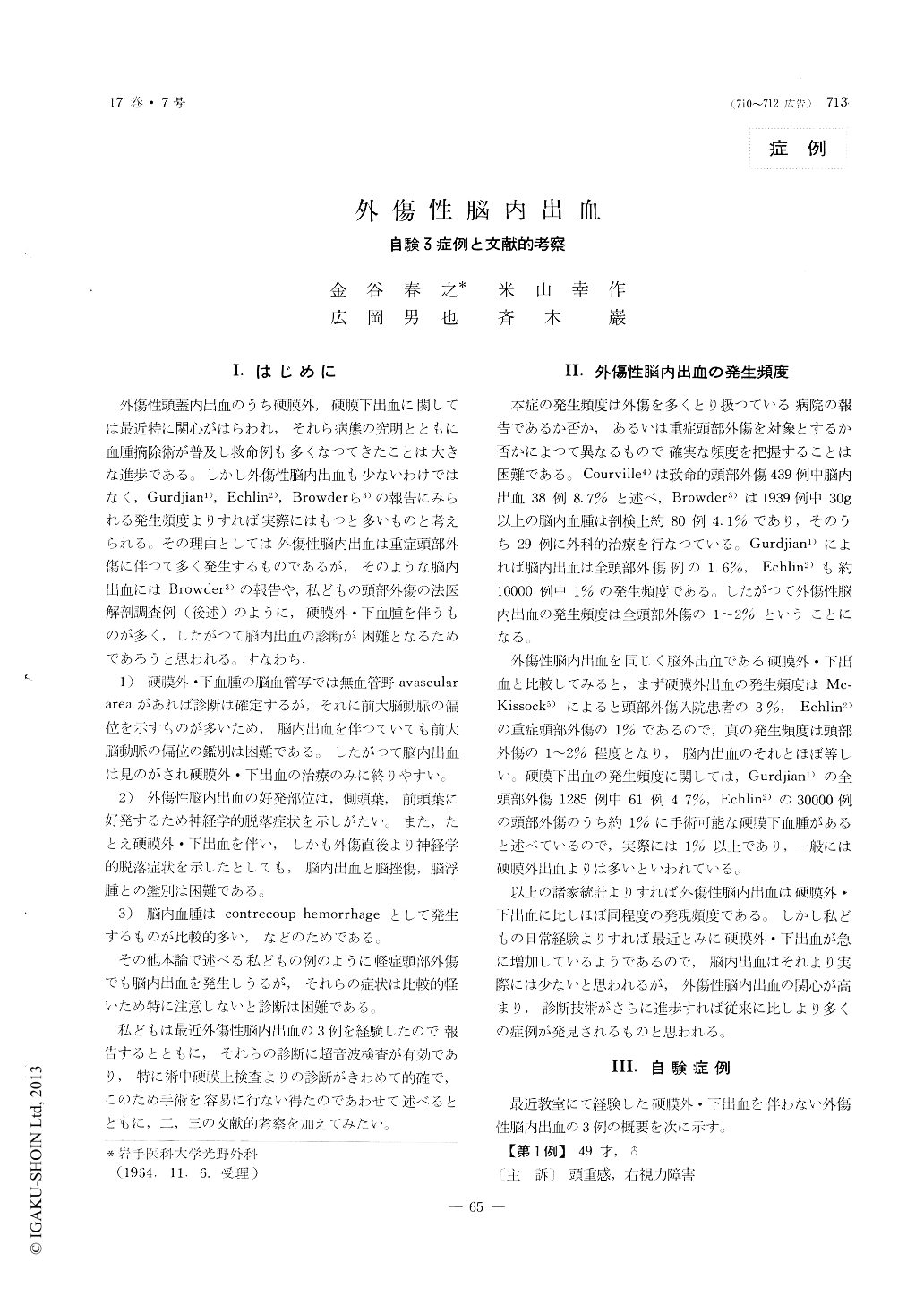Japanese
English
- 有料閲覧
- Abstract 文献概要
- 1ページ目 Look Inside
I.はじめに
外傷性頭蓋内出血のうち硬膜外,硬膜下出血に関しては最近特に関心がはらわれ,それら病態の究明とともに血腫摘除術が普及し救命例も多くなつてきたことは大きな進歩である。しかし外傷性脳内出血も少ないわけではなく,Gurdjian1), Echlin2), Browderら3)の報告にみられる発生頻度よりすれば実際にはもつと多いものと考えられる,その理由としては外傷性脳内出血は重症頭部外傷に伴つて多く発生するものであるが,そのような脳内出血にはBrowder3)の報告や,私どもの頭部外傷の法医解剖調査例(後述)のように,硬膜外・下血腫を伴うものが多く,したがつて脳内出血の診断が困難となるためであろうと思われる。すなわち,
1)硬膜外・下血腫の脳血管写では無血管野avascular areaがあれば診断は確定するが,それに前大脳動脈の偏位を示すものが多いため,脳内出血を伴つていても前大脳動脈の偏位の鑑別は困難である。したがつて脳内出血は見のがされ硬膜外・下出血の治療のみに終りやすい。
It seems that less attention has been paid to trau-matic intraceredal hemorrhage than to epidural or subdural hemorrhage.
The fact that this hemorrhage is very often ac-companied with epidural or subdural hemorrhage makes the diagnosis difficult.
The incidence of intracerebral hemorrhage is told 1-2% of all cases with head injury on literature, as high as that of subdural hemorrhage. The in-tracerebral hemorrhage must be found out not so rarely with careful examination.
This hemorrhage occurs most frequently in tem-poral lobe, followed by frontal lobe.
In our series three cases with the hemorrhage two in temporal lobe and one in frontal lobe were reported. The effectiveness of ultrasonic diagnosis of the hae-matoma, especially from right above the dura after taken off the bone flap during operation, was em-phasized.

Copyright © 1965, Igaku-Shoin Ltd. All rights reserved.


